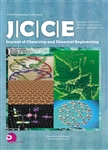LO-RAY-LIGH@ Diffraction Gratings in UV-VIS Spectroscopy
LO-RAY-LIGH@ Diffraction Gratings in UV-VIS Spectroscopy作者机构:Shimadzu Europa GmbI-L Duisburg D-47269 Germany Shimadzu Device Corporation Tokyo 101-8448 Japan
出 版 物:《Journal of Chemistry and Chemical Engineering》 (化学与化工(英文版))
年 卷 期:2013年第7卷第12期
页 面:1117-1120页
学科分类:070207[理学-光学] 07[理学] 08[工学] 0803[工学-光学工程] 0702[理学-物理学]
主 题:LO-RAY-LIGH stray light diffraction grating spectrophotometer single monochromator holographic grating highefficiency double monochromator.
摘 要:It has been more than half a century since the release of the first Shimadzu UV-VIS (UV-visible) spectrophotometer QB-50 in 1952, and during this time more than 160,000 UV-VIS spectrometers have been produced and installed in a wide variety of different applications. A lot of technical innovations have been implemented to improve the performance and significantly reduce the stray light levels. The latest innovation during development of sophisticated spectrophotometers is based on a new holographic exposure method and optimized etching process which has made it possible to produce both high-efficient and exceptionally low stray light gratings. These LO-RAY-LIGH~ gratings have guaranteed values of stray light at the intermediate position between zero-order and first-order lights. The values are measured by Shimadzu's laser stray-light-measuring system. The latest development in the series of UV-VIS spectrophotometers is the UV-2700 which is a true double beam double monochromator system in a compact design for high-precision spectral analysis of a wide range of samples including organic and inorganic compounds, biological samples, optical materials and photovoltaics. The high performance optical system is designed with "LO-RAY-LIGH" diffraction gratings, featuring highest efficiency and exceptionally low stray light. The spectrophotometer operates in the wavelength range from 185 nm to 900 nm and allows highly sophisticated applications such as direct measurement of high density samples up to 8 absorbance units without dilution.



